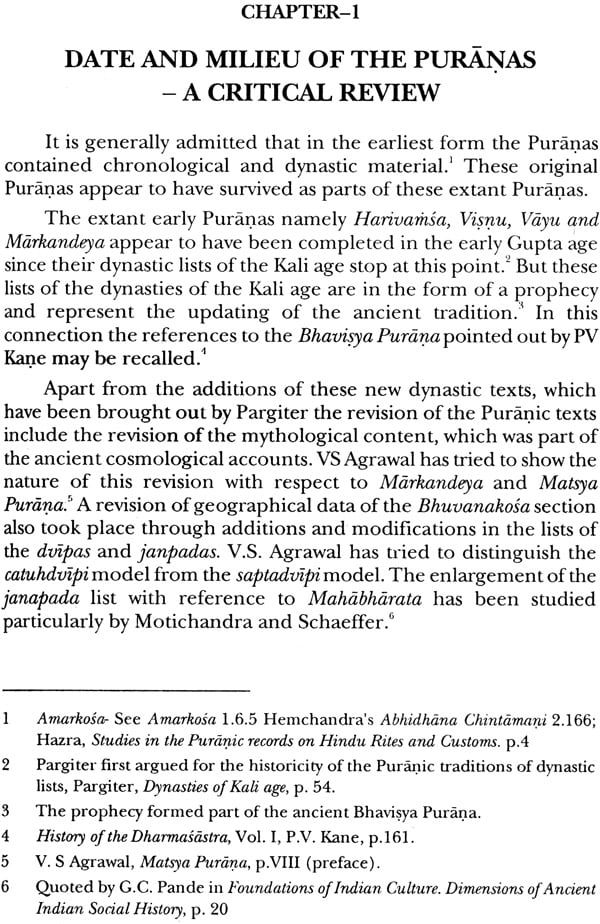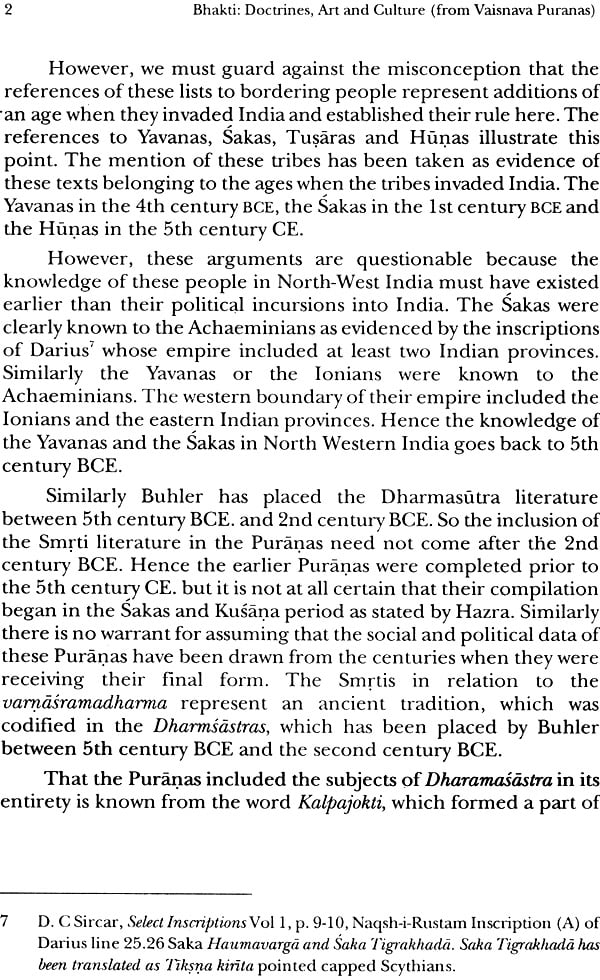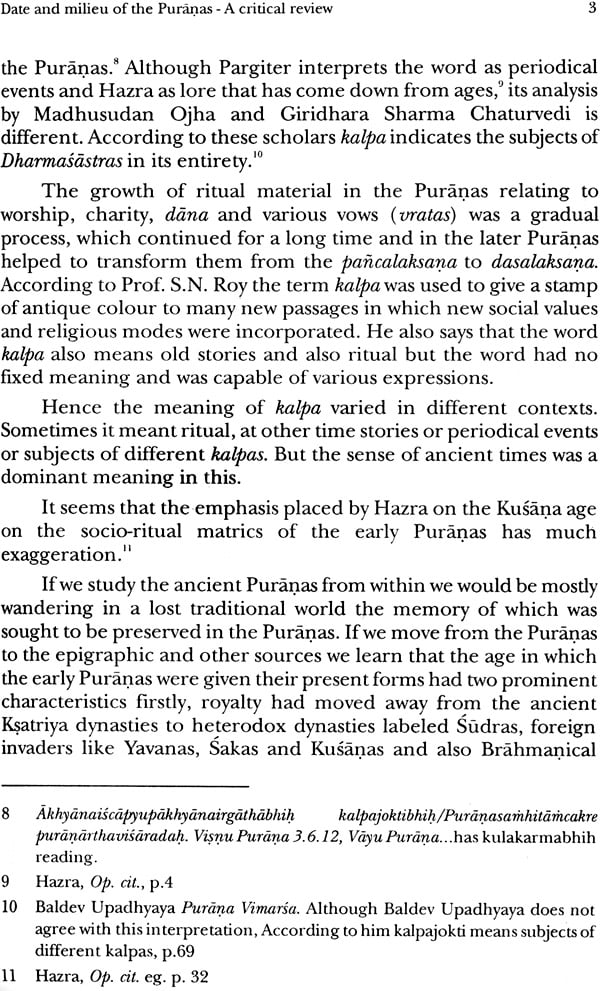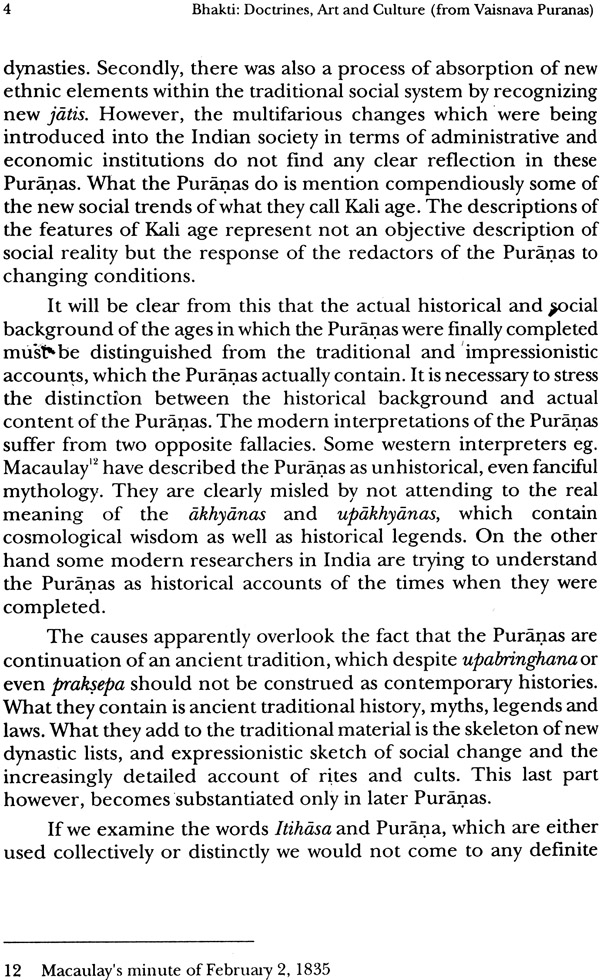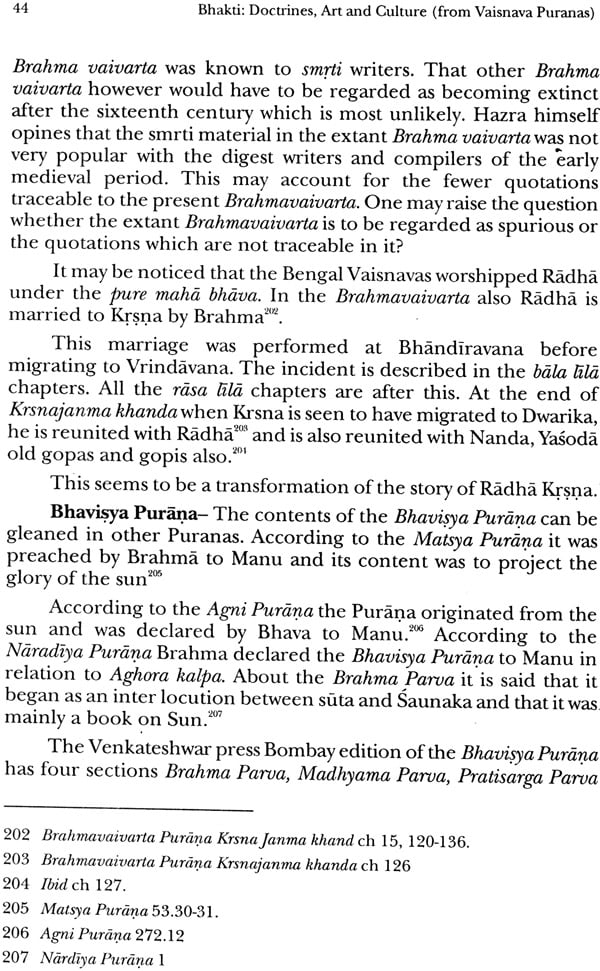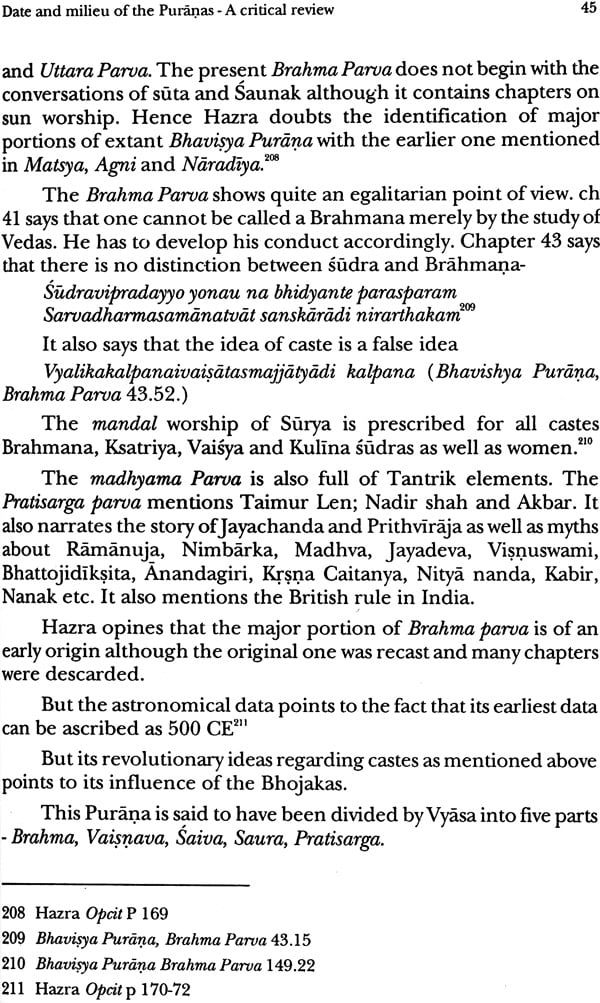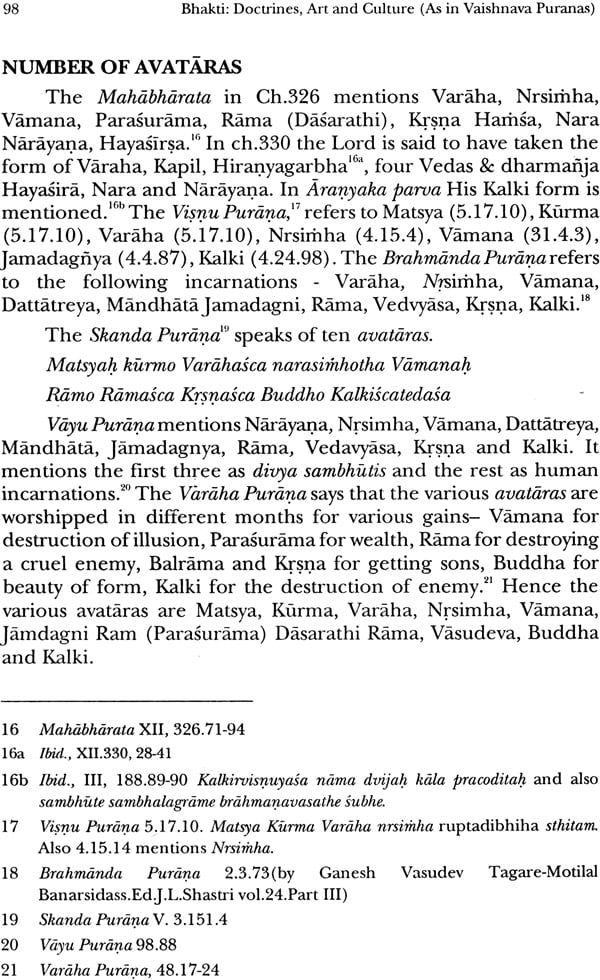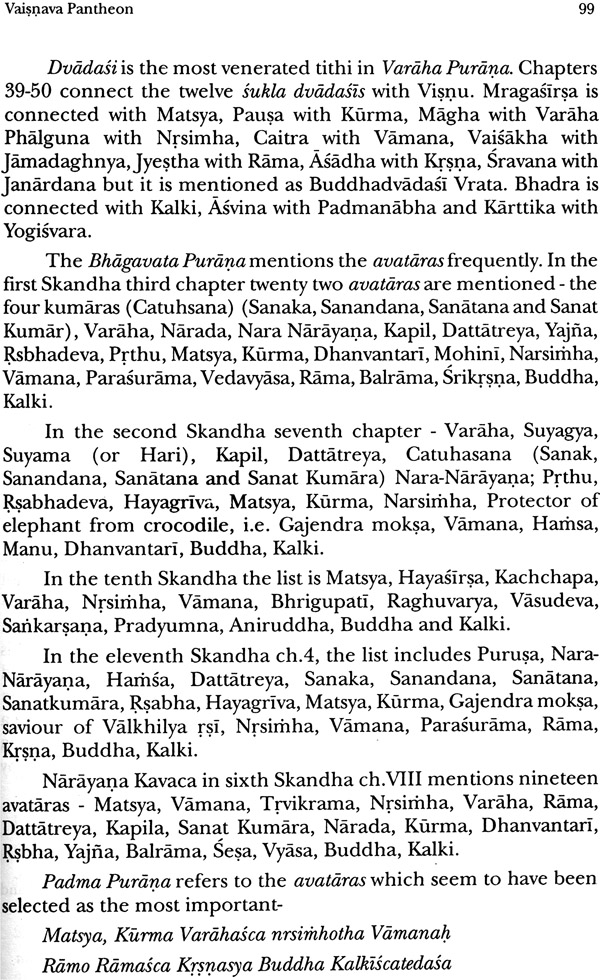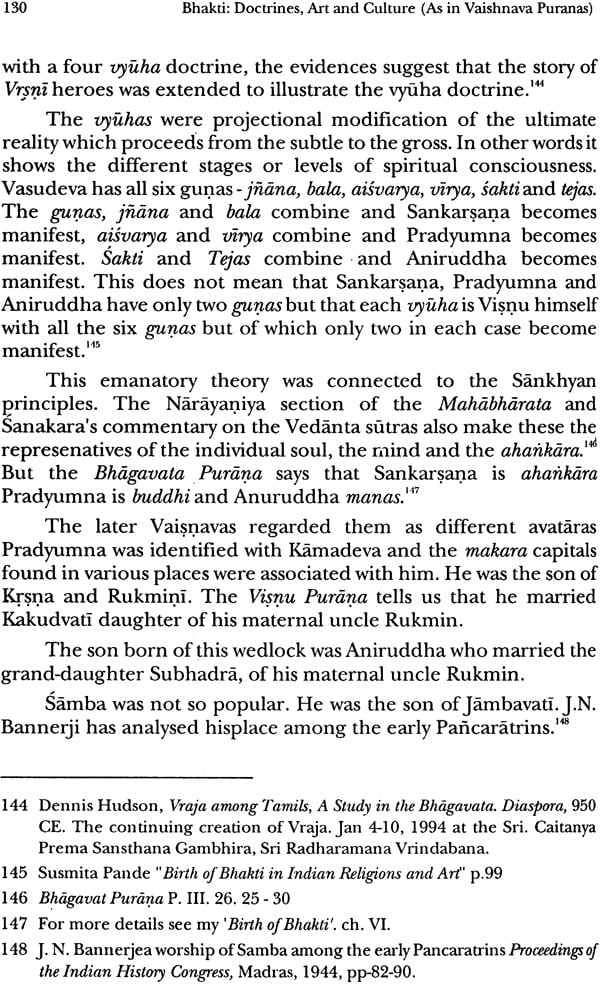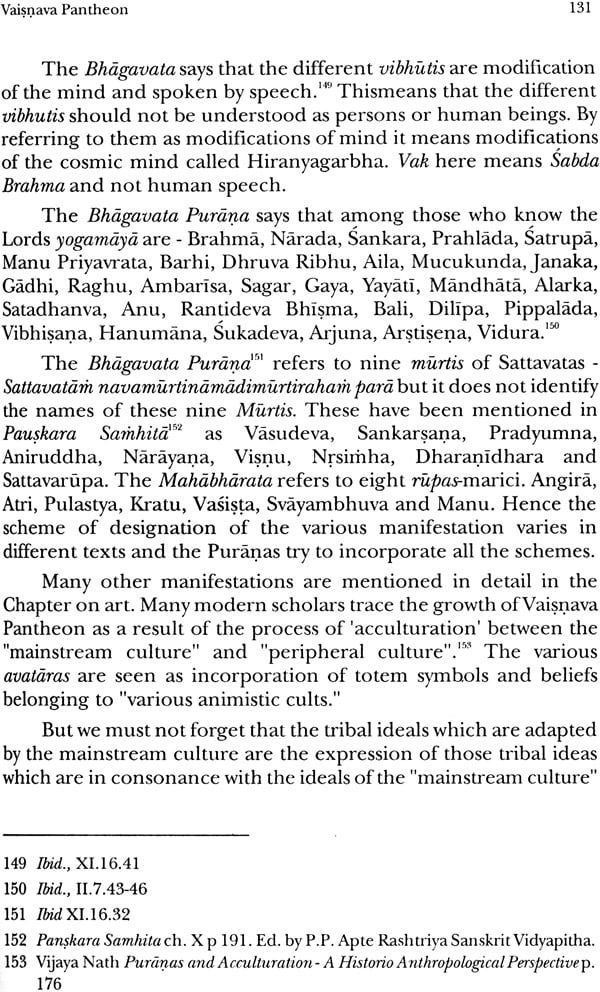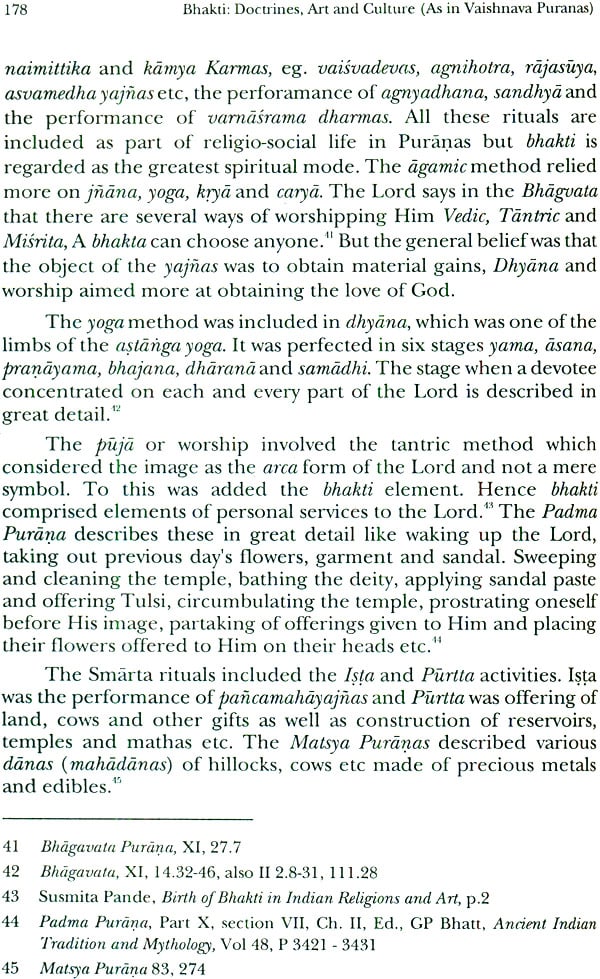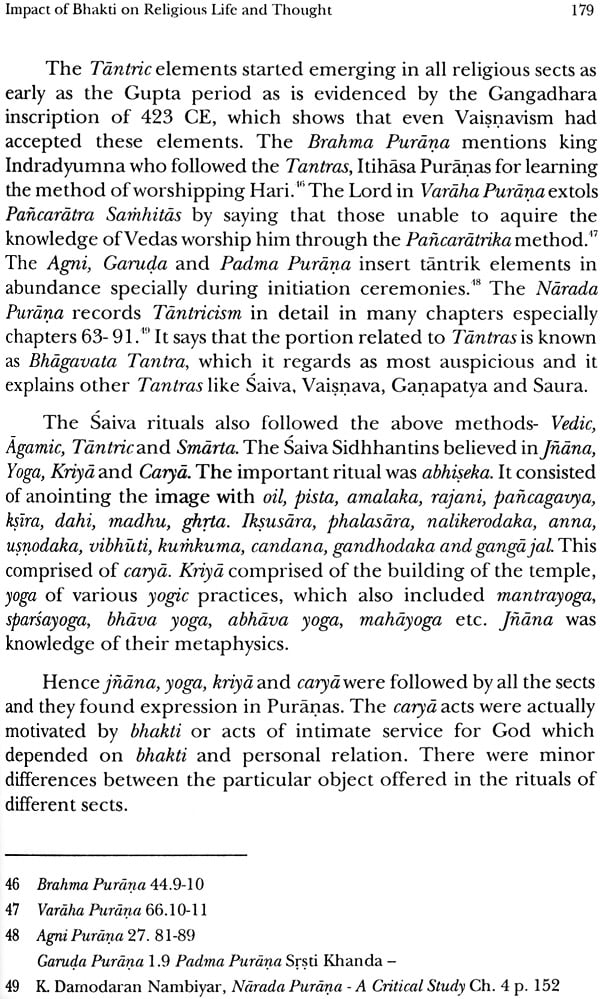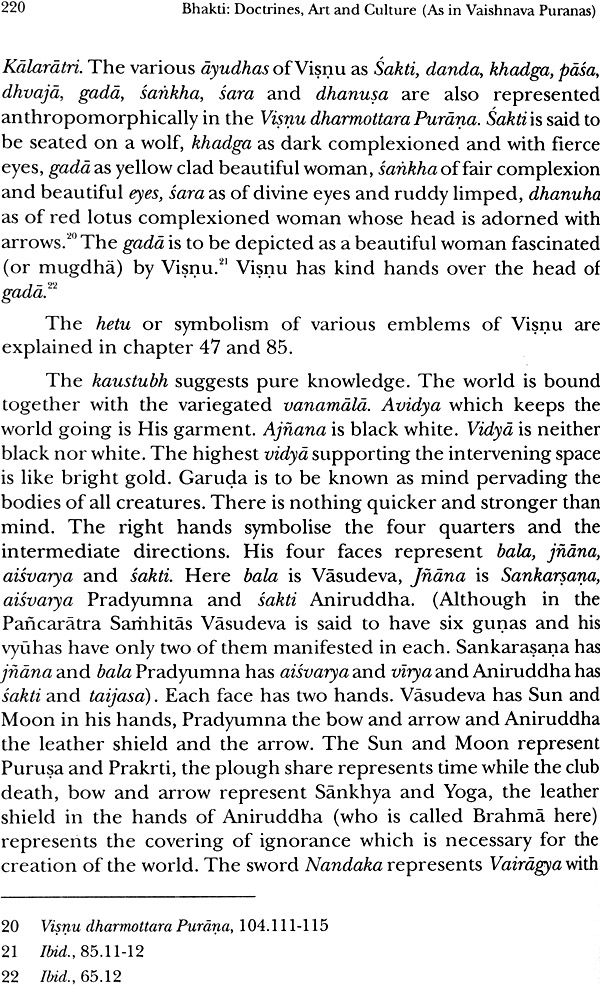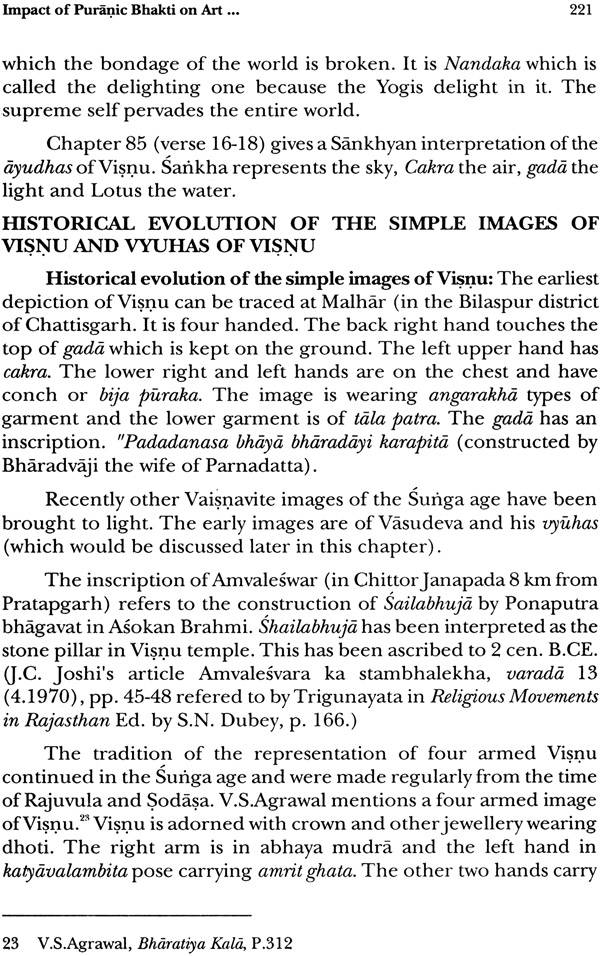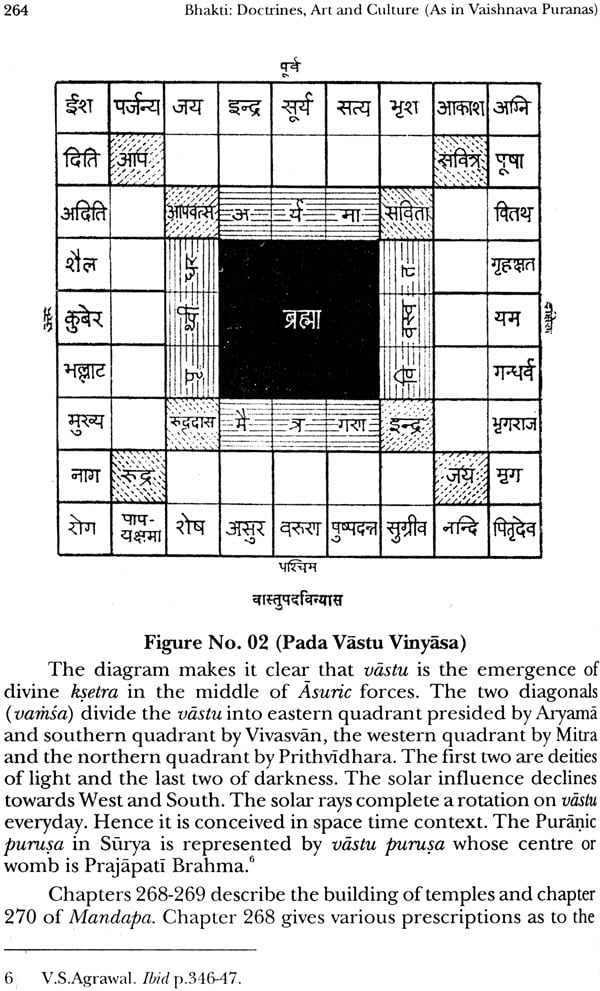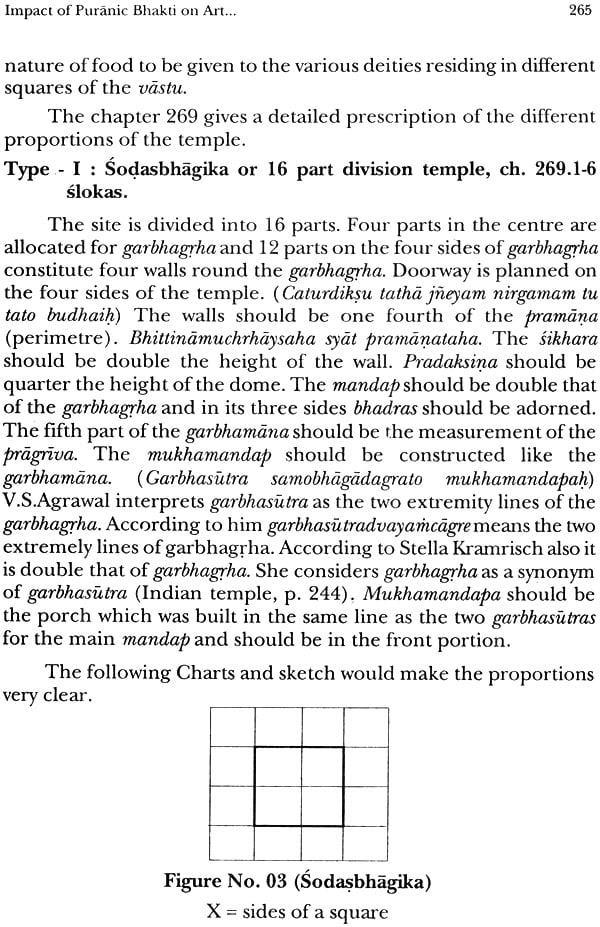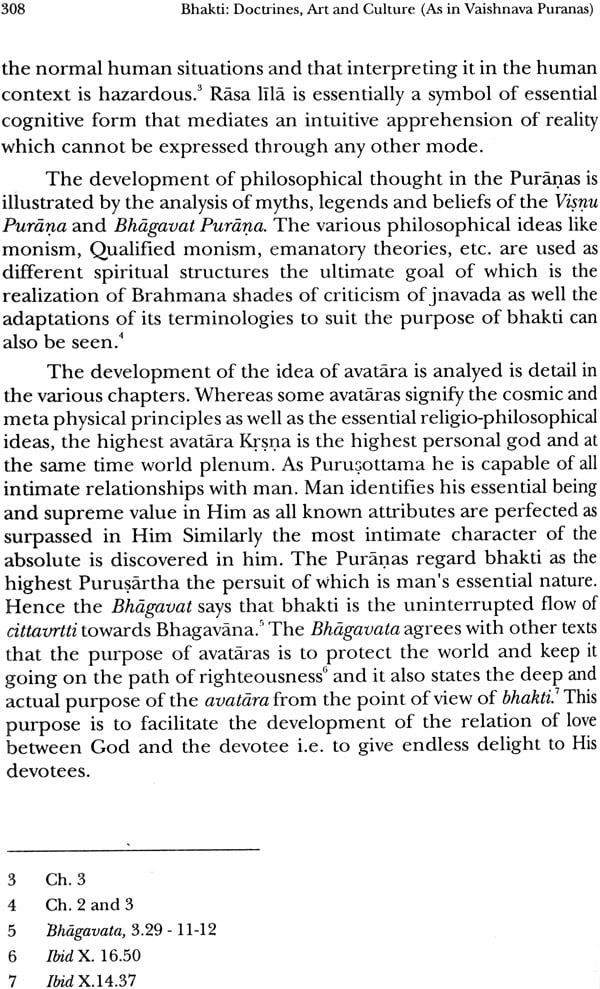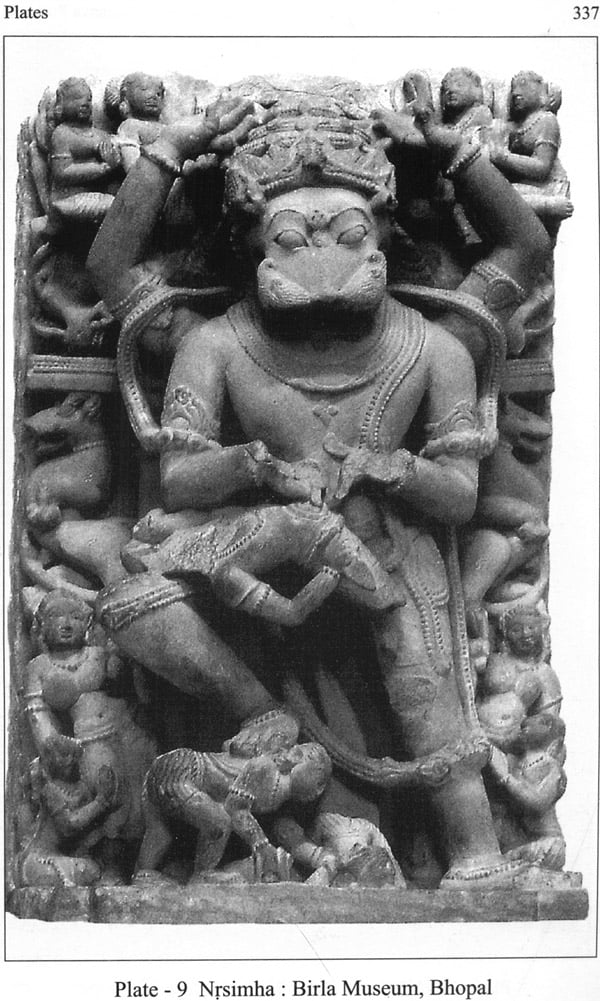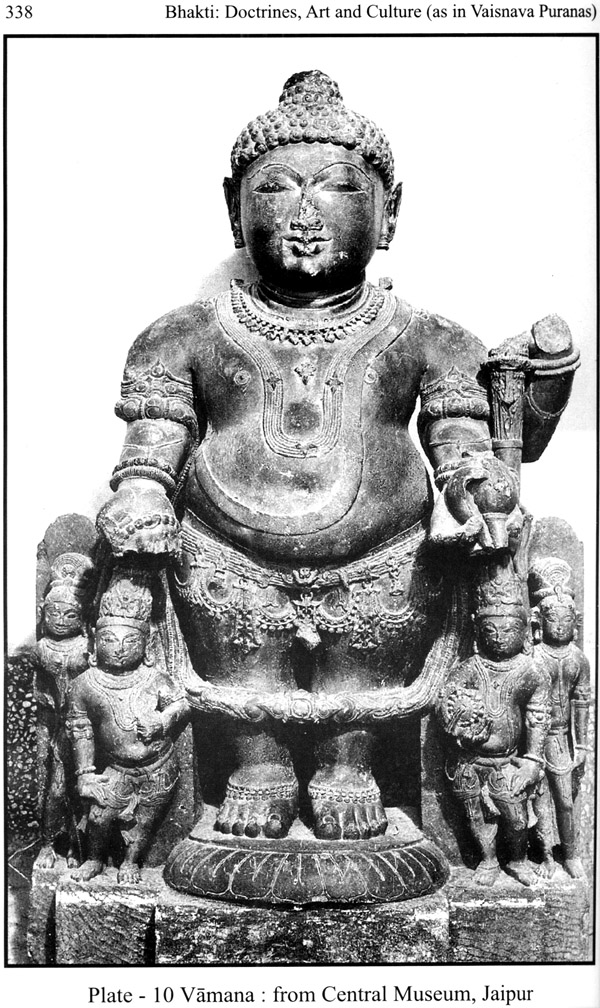
Bhakti Doctrines, Art and Culture (As in Vaishnava Puranas)
Book Specification
| Item Code: | NAK615 |
| Author: | Prof. (Dr.) Susmita Pande, D. Litt. |
| Publisher: | Raka Prakashan, Allahabad |
| Language: | English |
| Edition: | 2014 |
| ISBN: | 9789382182146 |
| Pages: | 338 (28 B/W Plates) |
| Cover: | Hardcover |
| Other Details | 9.5 inch x 6.5 inch |
| Weight | 660 gm |
Book Description
About the Book
The Puranas have proved to be a rich encyclopaedia of India Culture. Not only do they popularize the religio-philosophical tradition of ancient India, they also bring the reach of the common man, the practical and the scientific disciplines like medicine, astrology, architecture etc. Since the scope of the present work aims at analysing the impact of Bhakti on society, religion and art, the work has dealt with the socio-religious and philosophical traditions as well as the practical discipline which has a direct impact on Bhakti.
What makes the account of the Puranas especial is their attempt to bring out a symbiosis between the ancient and the modern traditions and evolve new ideal patterns which synthesize Vedic, Agamic and Pravrtti and nivrtti ways of life and evolve a science of worship by the prevalence of images, temples, tradition of public path, recital of japa, dhyana, tirtha and dana.
The Puranas also frame rules propagating egalitarianism in the context of Bhakti. Bhakti emerges as a great social leveller.
The Puranas are also important from the point of view of historiography of religion and the science of religion. Bhakti receives a Sastraic background and is an integral combination of knowledge, emotion and action and is aptly termed as the highest purushartha.
About the Author
Dr. Susmita Pande, D’Litt. is Professor and Head in the school of Studies in Ancient India History, Culture and Archaeology Vikram University, Ujjain (India).
Her important books include Birth of Bhakti in Indian Religions & Art (Books & Books, New Delhi), Mediaeval Bhakti Movement (Kusumanjali Prakashan, Meerut), Samaj, Arthik Vyavastha Evam Dharma (M.P. Hindi Grantha Academy, Bhopal) and Bhartiya Sanskriti (M.P. Hindi Grantha Academy).
She has a number of research articles to her credit which include Articles on various aspects of Indian Culture and Heritage for M.P. Bhoj (Open) University, Bhopal She has been the Editor of many books and also of the research journal, Prachya Pratibha.
She was also associated with the research projects of U.G.C., I.C.H.R. and I.I.A.S. Simla and NMMA, New chalcolithic site was unearthed
Preface
The study of the Puranas as cultural documents has had a long history. Pargiter had argued that the original Puranic traditions went back to the Vedic age. RC Hazra studied the socio-cultural milieu in the Puranas and attempted to determine the dates of the extant Puranas. VS Agrawal showed how the mythical, cosmological, geographical and cultural traditions were represented in the Puranas through symbols, motifs and iconography. Since then a host of scholars like Dikshitar, SN Dasgupta, SN Roy, ABL Awasthi and many others have published important studies on the antiquity, mythology, social and religio- philosophical ideas of the Puranas. The present work seeks to be another, step in the direction of the above researches, Its contribution in eleven chapters seeks to trace the Puranas from the point of view of development of bhakti and its impact on religion, society and art of India especially the Northern India. The work has especially taken the Vaisnava Puranas to show how the religio-philosophical tradition of ancient India was brought to the reach of the common man. The doctrines of Vedanta, Sankhya, Yoga and Tantra were woven together into a rich fabric of bhakti and presented, to the masses as different spiritual structures, the ultimate aim of which was a unique blend of pravrtti and nivrtti through bhakti. The various mythologies, rituals, the legend of Krsna, the love of gopisfor Him go a long way as a symbolic communication of the two levels of consciousness-empirical and transcendental. This inspired the growth of various art forms like sculpture, painting and architecture. The religio- philosophical ideas were fused together with the practical engineering feat which led to the construction of unique temples which were functional as well as symbolic. The various modules of the temples prescribed in the Puranas have been analysed in this work. The Vaisnava Puranas thus contribute a lot in making bhakti a popular movement which was not a radical social movement but which caused the religious and ethical values to permeate the consciousness of the people gradually by presenting an integral structure of bhakti which was at once theoretical, emotional and practical.
The egalitarian, syncretic and symbiotic spirit of the Puranas does not see a contradiction between the religion of heart and rituals, and between higher spiritual philosophy and its manifestation in the lives of men. Vaisnavism went a long way in developing a universal religion of love which incorporated all castes and classes as well as foreigners in its fold. This is reflected in the Vaisnava Puranas.
I am deeply thankful to my father Prof. GC Pande, my gurus Prof. BNS Yadav and Prof. SN Roy for encouraging me to work on this topic. I am also thankful to Prof. HN Dubey, Allahabad University, Dr. SK Gupta, former Head, Raj as than University, Jaipur, Dr. Kamal Giri, Director, Gyana Pravaha, Varanasi and Prof. RK Sharma, former Head, Rani Durgawati University, Jabalpur, Prof. RN Mishra, Fellow, Indian Institute of Advanced Study, Shimla, Prof. Suresh Chandra Pande, Allahabad for their advice and guidance.
My special thanks are also due to Shri Ota, Superintending Archaeologist and other officials of Archaeological Survey of India, Shri Joseph Manuel, Dr. Dilip Khamari and Dr. Narayan Vyas for their cooperation.
My thanks are due to the American Institute of Indian Studies Gurgaon for providing rare photographs & to Sindhia Oriental Institute, Prof. Bal Krishna Sharma, Vikram University, Ujjain for the cover photograph. I thank Rakhi Anand, Mayukhini Pan de and Sucharita Beniwal of National Institute of Design, Ahmedabad for the cover design.
My heartfelt thanks are due to Dr. Rajesh Kumar Mishra, Dr. Jitendra Suman, Dr. Debarshi Sen and Dr. Manoj Sharma for helping me in various ways. I thank Shri Bhupendra Singh Chauhan, Shri Vikram Dave and Shri Sunil Pandey (Allahabad Museum) for preparing a neat typescript patiently.
I am grateful to Shri Rakesh Tiwari of Raka Publishing House for the printing of this book.
My thanks are due in no small measure to my husband Shri VK Pande who helped me in preparing various sketches of the diagrams of the temple types. I am also thankful to my sister Amita Sharma whose occasional suggestions were very helpful to me. I am grateful to my mother, late mother-in-law, my father in-law Prof. I.C. Pande, my sisters Anupa Pande, Tanuja Pande, my brothers in law Jaimini Kumar Sharma, Devi Prasad Pande & Binay Kishore Pan de and my daughters Shinjini, Mayukhini, sons in-law Kunal and Jai and grandson Ashutosh for their support.
My reverence is due to Lal Baba, Guruji Buddhi Prakashji and Kailashpatiji.
At the end I would like to thank Lord Visnu, the path makers of the Puranic tradition and their modern discoverers.
Contents
| S.N. | Chapter | Page |
| l. | Date and milieu of the Puranas- A Critical Review | 1 |
| 2. | Nature of Bhakti in the Visnu Purana | 49 |
| 3. | The Role of Bhagavata Purana in the Development | 64 |
|
| of Bhakti |
|
| 4. | Vaisnava Pantheon | 90 |
| 5. | Cults and Sects | 133 |
| 6. | Centres of Pilgrimage | 154 |
| 7. | Impact of Bhakti on Religious life and Thought | 168 |
| 8. | Impact on Social Life (Socio-Political Ideas in the Puranas) | 182 |
| 9. | Bhakti: The Perspective Of Historiography and Science Of Religion | 203 |
| 10. | Impact of Puranic Bhakti on Art Part-I (Sculpture) | 216 |
| ll. | Impact of Puranic Bhakti on Art Part-II (Painting) | 255 |
| 12. | Impact of Puranic Bhakti on Art Part- III (Temple Architecture ) | 260 |
| 13. | Conclusion | 306 |
| 14. | Bibliography | 312 |
| 15. | Index | 321 |
| 16. | Plates | 327 |
